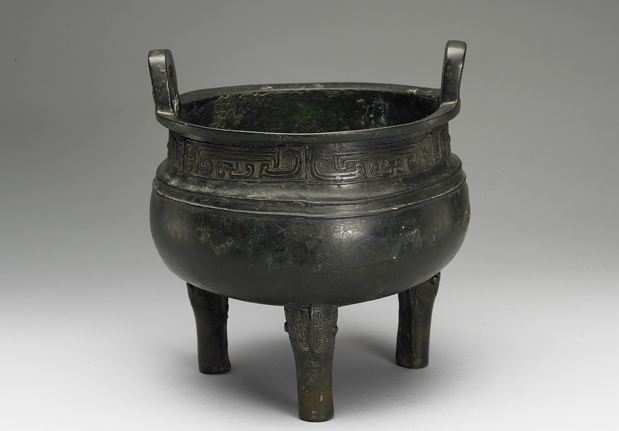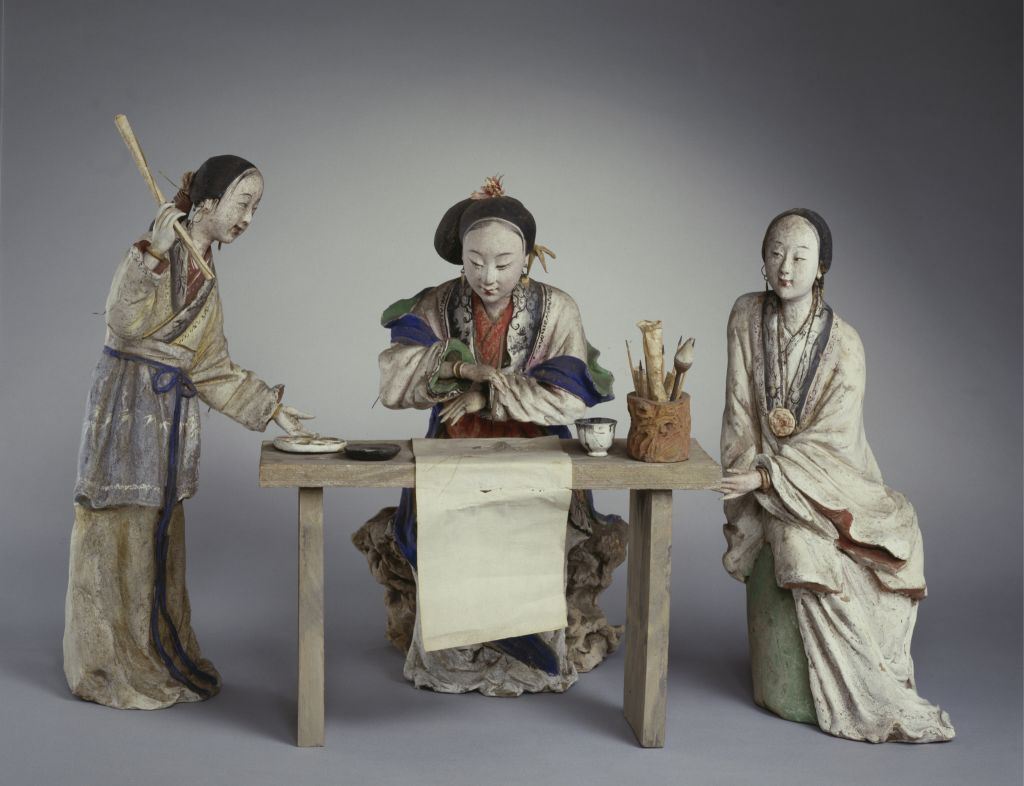[Green jade lotus supporting squatting dragon]
Green jade lotus supporting squatting dragon, yuan, height 13 cm, bottom diameter 6.4 cm
The sapphire has grain cracks, ink spots, and some parts are yellowish brown. The round sculpture sits on the lotus seat. The dragon raised its head and grasped the flame bead with one claw. Double horns, long and thin eyebrows, extending backward. The back is ridged, and the elbow hair is raised at the joint. The knife technique is strong and rough, leaving obvious digging marks at the openwork. There is a large hole in the center of the bottom and a small hole on the side. It is speculated that this product should be fixed on other objects
The dragon is a mythical object in ancient Chinese legend, a complex of many animals, and its appearance is related to the demand of agricultural society for rain. Therefore, the dragon in the legend is often able to make rain, and is called together with the phoenix that can call the wind. The dragon and phoenix later became the symbols of the emperor and queen respectively. At present, the earliest image of the dragon was found at the Chahai Site of Xinglongwa Culture in Inner Mongolia 8000 years ago, which was placed by reddish-brown stones. Dragon and dragon related images such as chi and kui are important decorative themes in ancient China. During the Song and Liao dynasties, the images of dragons were quite rich, including ascending dragons, traveling dragons and sitting dragons, each with its own modality, and most of them passed through the sea of clouds. There was a jade sitting dragon unearthed at the Liao Dynasty site, but it was a piece of sculpture, and it was small
The Eight Dragon King in the Indian Buddhist Sutra is a follower, provider or patron saint of the Buddha. This product combines dragon and lotus, reflecting the influence of Buddhism on jade carving
![图片[1]-Green jade lotus supporting squatting dragon-China Archive](https://chinaarchive.net/Yuan dynasty/Jade ware/57652[1024].jpg)





